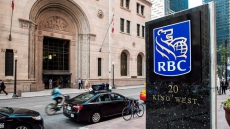EDMONTON — Some of the last evacuees from the Fort McMurray wildfire are being allowed to return home after Alberta's top health officer approved the cleanup of their neighbourhoods.
"I am confident that the municipality has the plans, mitigations and tools in place to ensure people returning to these homes will be safe," Karen Grimsrud said Thursday.
Some 439 homes in two Fort McMurray neighbourhoods badly damaged in the May fire have been declared safe for re-entry starting Wednesday. Grimsrud said those districts were particularly laden with debris and ash, which needed to be cleared away.
"(It's) not unexpected, when you have a wildfire in a metropolitan area, that you will have ash that is containing heavy metals and other toxic material," said Grimsrud, who visited the site last week.
Ash from the fire was found to be highly caustic and to have carcinogen levels high enough to affect human health in some circumstances.
The ash registered high levels of heavy metals such as lead. Arsenic was found in amounts many times higher than those that would start to damage the environment.
A second round of tests found no evidence that the ash or the contaminants had leached into the soil.

Grimsrud said no further tests of the residential areas are planned, but more will be done in public areas such as parks and pathways.
Another 242 homes are still considered too contaminated to be safe. Grimsrud said the municipality will have to submit a separate mitigation plan before she'll allow anyone to return to them.
She gave no date for when that might happen.
"I know that some displaced residents have been eagerly waiting for more details when they can return home. This must seem like a very long process," Grimsrud said. "I want to personally thank residents for their resilience and patience."
The fire was heading away from Fort McMurray when high winds on May 3 caused it to make an abrupt about-face and race towards the city.
More than 80,000 people had to leave their homes as the flames cut through several neighbourhoods. About 2,400 homes and buildings were destroyed.
Damage has been estimated at almost $3.6 billion, of which about $2.2 billion is expected to be personal property.

Residents started returning in June. Many found their homes still standing, but others were faced with a wasteland of ash and toxic debris.





